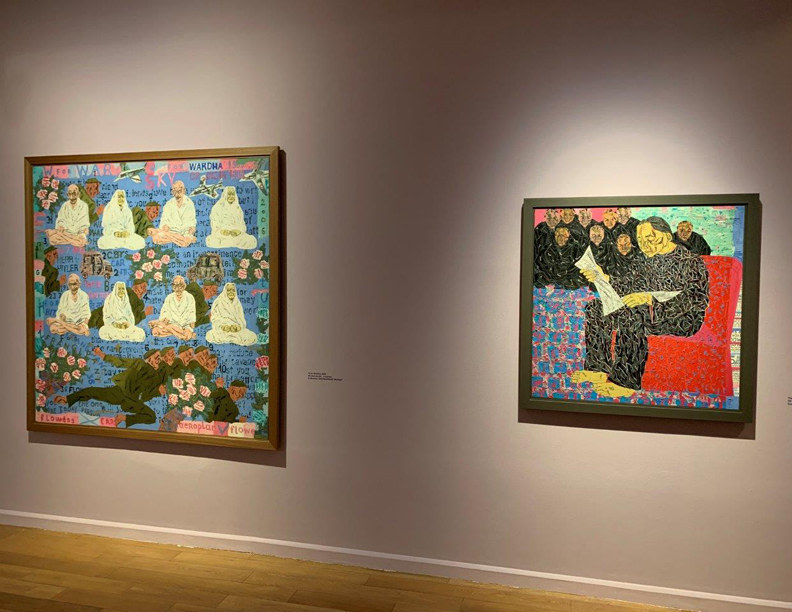
Arpita Singh was discovered by accident. In the early 1970s, scholar and costumier Roshen Alkazi-who, along with her husband, Ebrahim Alkazi, is responsible for hundreds of contemporary art exhibitions in India-found one of Singh's paintings mixed up with the works of another artist she was hoping to exhibit. Alkazi presented Singh's first solo exhibition at New Delhi's Kunika Chemould Gallery in 1972. In the same city nearly SO years later, the Kiran Nadar Museum of Art hosted a retrospective of the artist's work, spotlighting a figure whom some now call the standard-bearer of art in India. Aptly titled "Submergence: In the Midst of Here and There," the exhibition wound its way around the museum's labyrinthine space. At times difficult to negotiate, the layout demanded that viewers spend time to become fully submerged. Nevertheless, there were enough standout works from Singh's six-decade career that visitors could garner a sense of her achievement through a saunter, if not a more systematic approach.
Singh's early canvases from the 1970s had a clear modernist aesthetic, revealing the influence of her teachers, particularly Biren De. Oil paintings such as Whether It Is Violet or Yellow (1970) and Figures and Flowers (1971-72) feature objects floating in surreal configurations amid gradated backgrounds, which recall De's bindu-centric, luminous works. Curiously, in Singh's oeuvre, items such as bottles and plants are imbued through their scale, placement, and boldness of depiction with just as much personality as the human figures, which are placed on the canvas with an eye to their lines and form, rather than any inherently superior status.
This dreamy approach to image composition became a mainstay of Singh's artistic approach and was ubiquitous among the paintings on display. The canvases gave the impression of having some mysterious internal logic, like a lost language in a foreign script for which there is no cipher. While the symbolic values of her recurring subjects-roses, cars, and planes, to name a fewappear fluid and mysterious, they nonetheless communicate a process at work. Paintings such as Lesser Myth (2006), in which couples of people and tigers are superimposed over a newspaper collage; Evening Sky (2010), where randomly positioned cars and clouds float alongside a suspended human figure; and Roses (2000), of a man, woman, car, plane, lips, birds, and the eponymous flowers, all give the sense of a transcription taking placefrom quotidian observations to the subconscious, and eventually to the work's surface. Each of these images also includes actual text, as do much of Singh's later works. In Evening Sky, for instance, each object is labeled with its name, adding no previously unavailable meaning, but rather a playful aspect to the image.
An appearance of frivolity pervades Singh's practice. My Lollipop City; Gemini Rising (2005), a colorful, cluttered roadmap of New Delhi and its landmarks, is a strong example, though the work has a more serious subtext around urbanism and space, suggesting alternative ways of mapping and experiencing a city that lightly evokes the rebellious playfulness of Guy Debord and other psychogeographers. In A Man with a Telephone
(1992), Singh uses her symbols-cars, a saluting soldier-to surround a seemingly anxious speaker, employing a powerful trope in which the simple depiction of a phone call mysteriously intimates a more complex and troubling scenario seen elsewhere in the show in paintings such as An Evening Phone Call (1993) by Gely Korzhev, who rendered the traumas of the Second World War and the realities of life in the Soviet Union.
Like the depiction of New Delhi in My Lollipop City; Gemini Rising, "Submergence: In the Midst of Here and There" was crammed with pictures, and not always easy to navigate. However, to stage a retrospective of such a prolific artist is no small challenge, and it wasn't difficult to see the crowded presentation of the show as a fitting homage to a painter who uses her own packed compositions to powerful and lasting effect.
-Ned Carter Miles